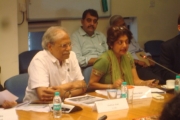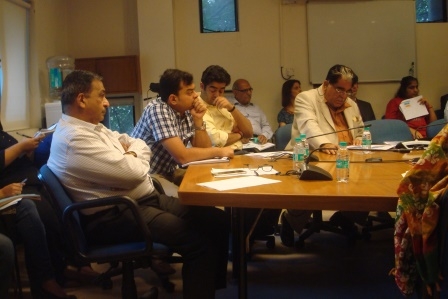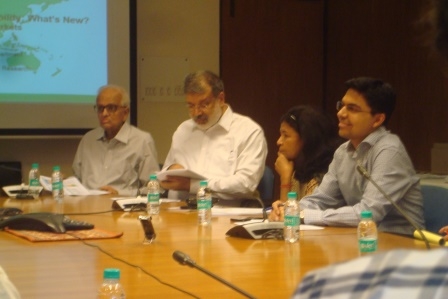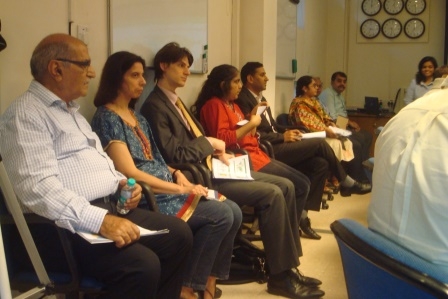A low-growth, low-rate era, accompanied by increased political and policy uncertainty, is creating many challenges for policymakers, banks, and corporates in all parts of the world. In this seminar, Dr Ratna Sahay, Acting Director of the IMF’s Monetary and Capital Markets Department, presented the key findings of the IMF’s October 2016 Global Financial Stability Report that analyses these challenges and offers solutions for fostering stability. The presentation focused on risks to the current outlook, the new environment and challenges from the perspective of advanced economies and the emerging markets and the measures that can ensure financial stability. NCAER research faculty and guests from institutions across New Delhi, including, Dr Bimal Jalan, Former Governor of the Reserve Bank of India, joined the discussions. Dr Anusha, Associate Fellow, NCAER presented her views, as the discussant for the seminar.
In emerging markets, including India and China, low interest rates and the global search for yield present unique opportunities for overly indebted firms to restructure their balance sheets. India’s top corporates remain among the most leveraged in emerging markets, increasing bank vulnerability and casting doubts on a smooth process of deleveraging. In advanced economies, the inability to adapt to this new environment could undermine the health of financial institutions and delay economic recovery. The IMF Report finds that short-term risks to global financial stability have abated since April 2016, but that medium-term risks continue to build. Financial institutions in advanced economies face a number of cyclical and structural challenges and need to adapt to low growth and low interest rates. Since these challenges are unlikely to be resolved by a cyclical recovery, there is need for more deep-rooted reforms and efficient macro management. In addition, an unsettled political climate in many countries, lack of income growth and rise in inequality make it more difficult to tackle legacy problems besides exposing economies and markets to shocks. The IMF Report assesses how improvements over the past two decades have raised the resilience of financial systems in many economies and how these benefits strengthen the case for further reform.
Ratna Sahay is the Acting Director of the Monetary and Capital Markets Department at the International Monetary Fund. She joined the IMF in 1989 and has worked in eight IMF departments since then. She has led surveillance and programme missions to several emerging market and low income countries, headed analytical projects and policy papers, and represented the IMF in various fora. She has published widely on financial markets, inflation, economic growth, fiscal policy, debt sustainability, financial inclusion and related issues. Prior to joining the IMF, she taught at Delhi University, Columbia University, and New York University. Sahay holds a PhD in economics from New York University.
Anusha is Associate Fellow at NCAER. Her recent PhD research focused on using frequency domain time series methods to understand business cycles in India and their co-movement with credit in India and the US. Anusha’s broader research interests include business cycles, financial markets and applied time series analysis in macroeconomics. She is currently working on developing an Indian equivalent of the FAO’s COSIMO model to project the short and medium-term agricultural outlook for India. She received her PhD in economics from the Indira Gandhi Institute of Development Research and a MA in mathematics from Delhi University.










